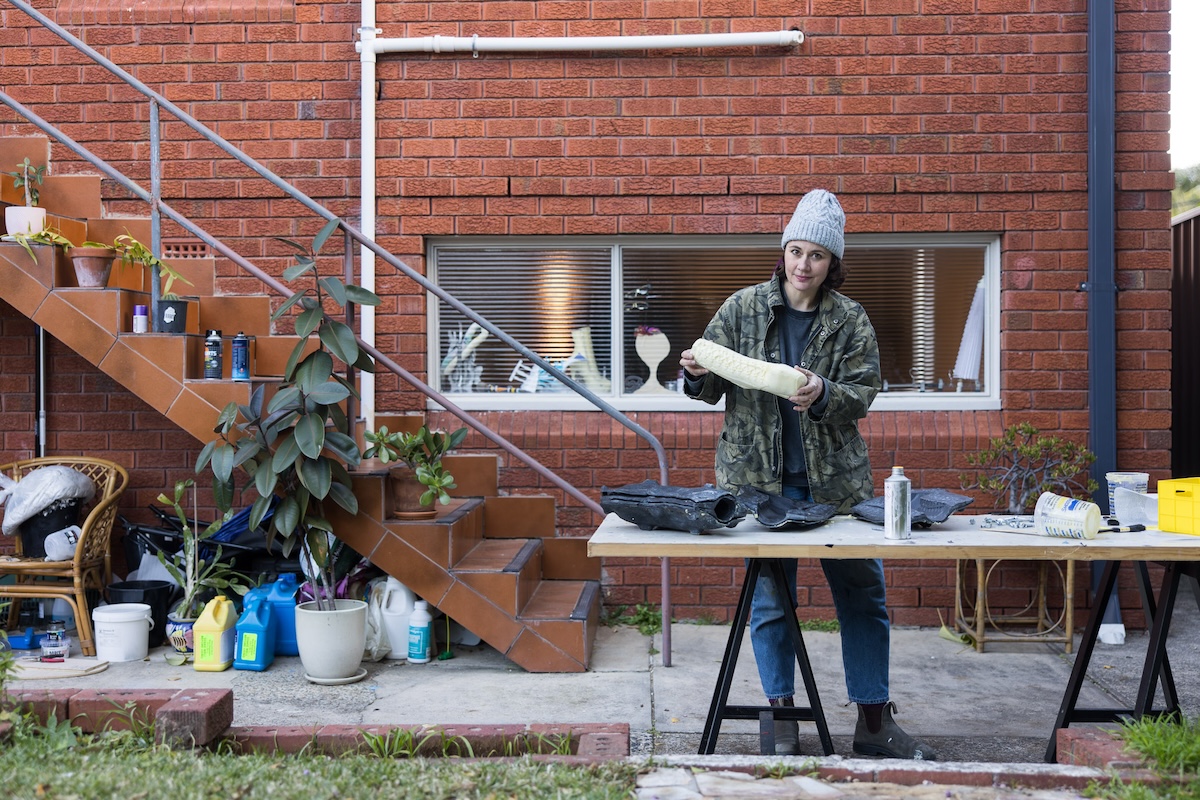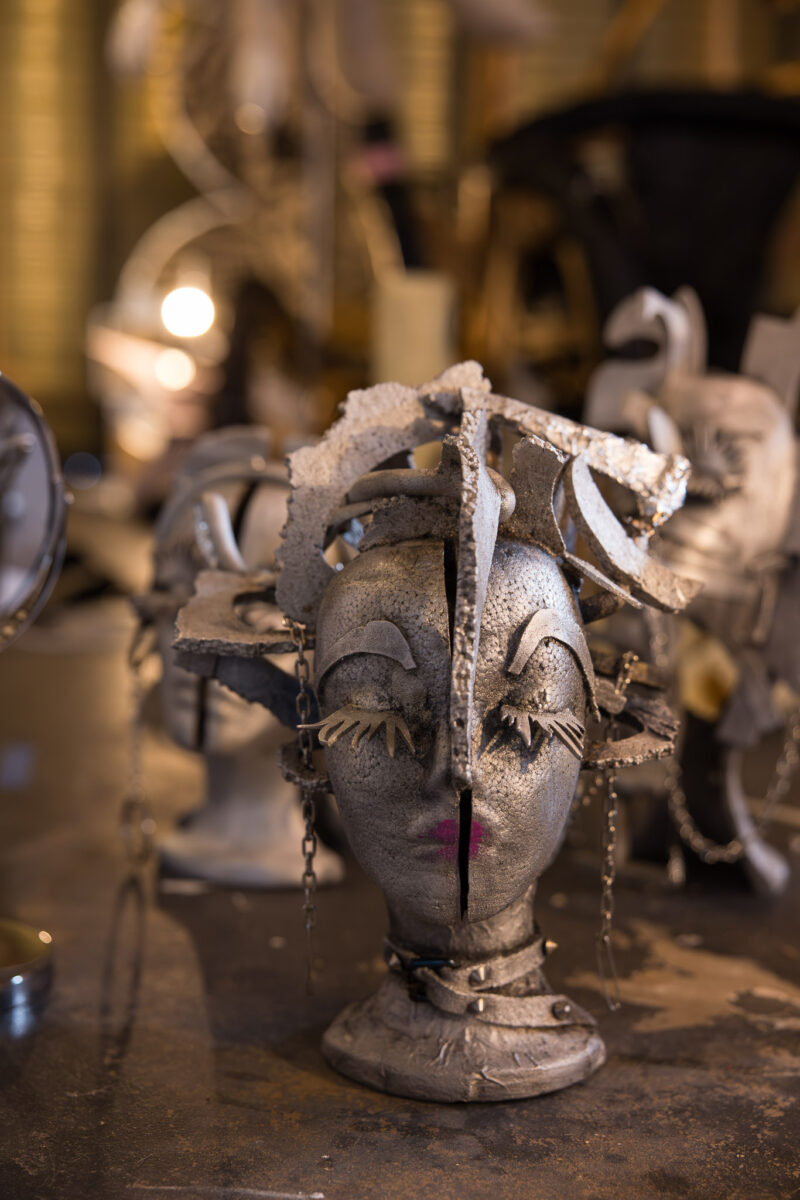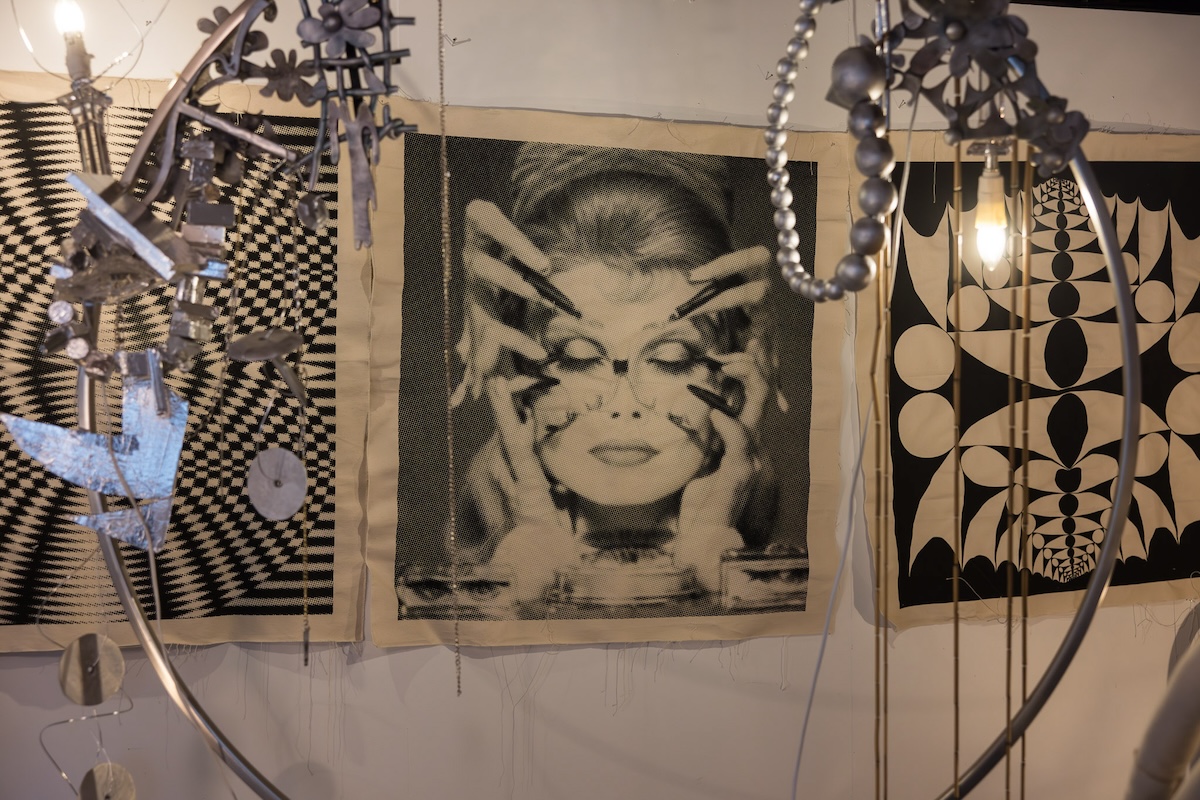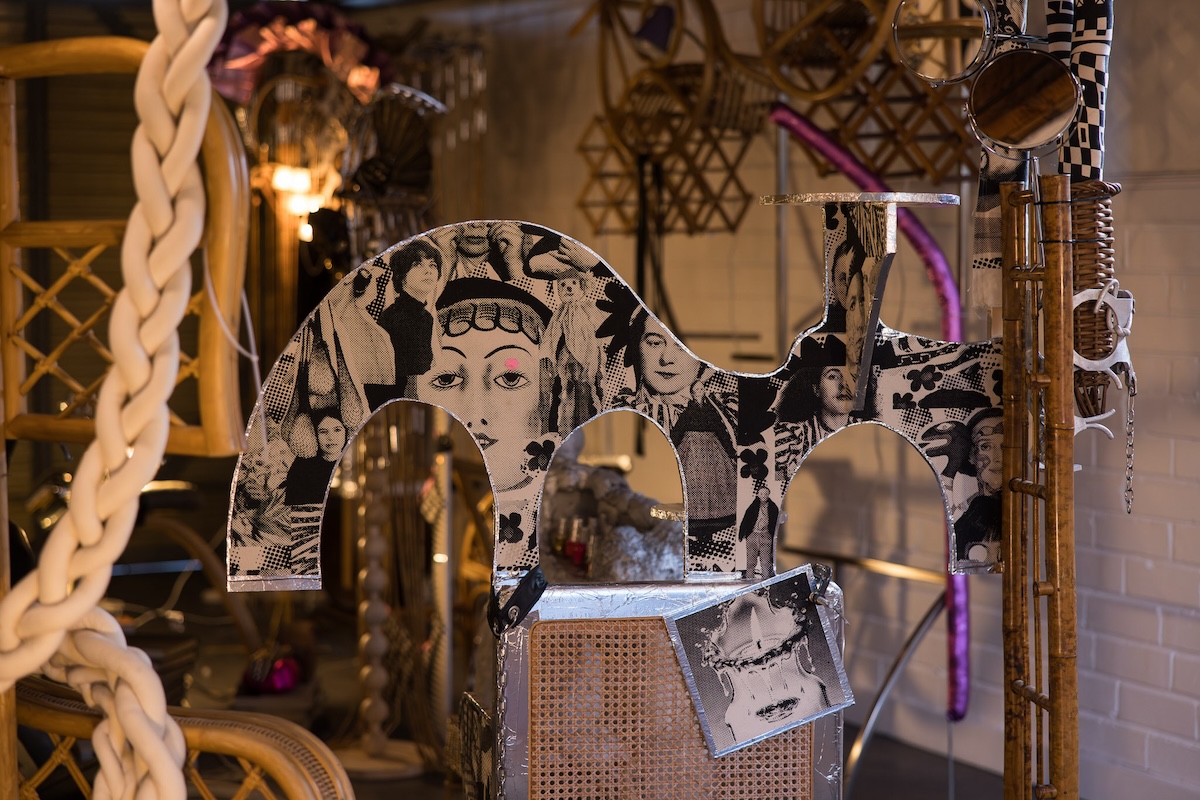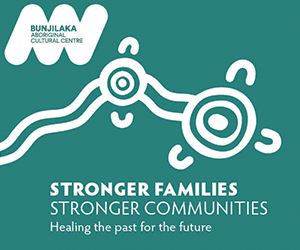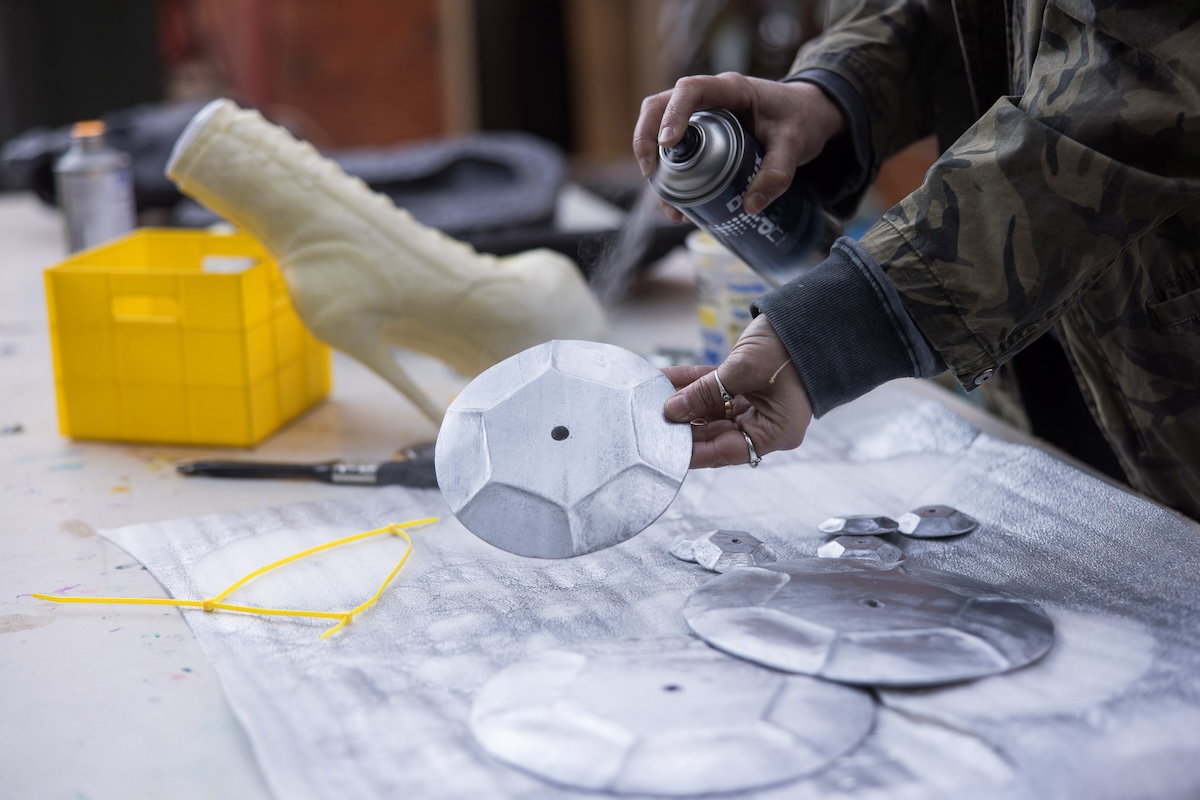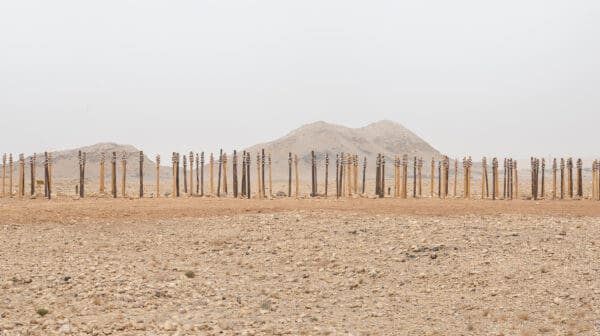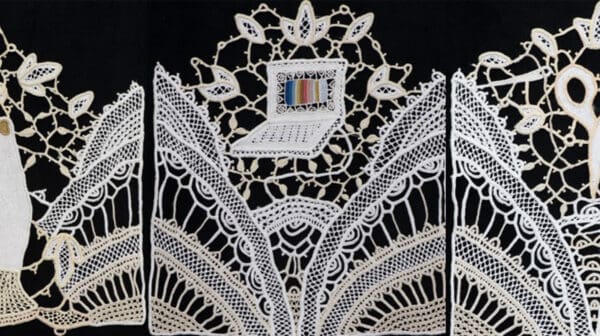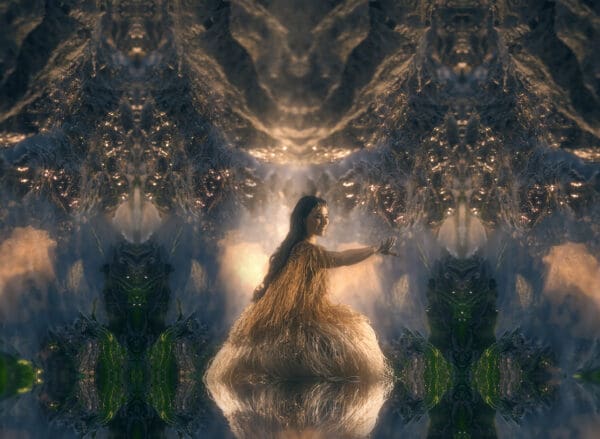Stepping into Sarah Contos’s sprawling home studio in Kyle Bay, in southern Sydney, feels like a step inside the artist’s inventive and inquisitive brain—apt given that Contos’s upcoming show at UNSW Galleries, Eye Lash Horizon, explores aspects of what makes us human.
There is a literal and figurative correlation between Contos’s art and where she lives, works and plays. This is particularly so in her present work, not only due to the ambitious scale of the freewheeling material universe that Contos fills the large space with—but also because the isolated studio location has allowed for her most introspective and self-reflexive exploration of this colourful cosmos yet.
Place
Sarah Contos: I came to Kyle Bay out of necessity, for a studio space that would cater to the breadth of this exhibition that I’m currently working on, which will be at UNSW Galleries. It’s really not that far, but in people’s heads it is—to get from Hurstville to the city or to Redfern is on the same [train] line and takes about 20 minutes.
I’ve only worked from home once before, but I quite like having my own space, getting inside my head. Whenever I’m in a communal space, I tend to just put my headphones on to avoid interruptions from people. So it works perfectly here at the moment: having this spacious studio and the backyard where we do all our casting and forge work, and a sewing studio upstairs. It’s very multifunctional.
It’s interesting being south [of Sydney] because I don’t know many artists that live down here. It’s great that Daniel Mudie Cunningham is becoming the director at Wollongong Art Gallery and Sebastian Goldspink is the director at Hazelhurst Arts Centre [nearby], so there are some new ‘down south’ vibes happening.
Process
Sarah Contos: My process really starts happening through research and then play. I’ll usually have a certain idea or theme of what I want to make or investigate. And then there might be a little spark of something, like a material, a feeling or form that’s mentioned—and then I’ll go explore and play with that in the studio to see what happens. It’s mainly through listening to the little voice in your head saying, “Try this, now go there and try that” which will lead me to more concrete ideas and resolved pieces. It’s tuning into that voice which can take time.
I also look at other artists, musicians, architects and designers that I love. Sometimes they give me this imaginary permission or that extra push to be more experimental.
It [creating] happens very organically and sometimes it’s hard to solve what a work needs. I’ll try something but then I will have to leave it and go work on something else. And then upon returning it will be obvious what it needs. This is very apparent with these works which you can see in this space. These sculptures centre around aspects of the brain and are for my UNSW show. I’ve limited myself to deconstructed/reconstructed furniture, cane, cast aluminium, calico fabric, pre-loved leather jackets, screen-printed textiles, aluminium tape—and now I’ve introduced this bubble gum foam material. The materials have an emotional memory and are very evocative of a certain time and space.
I love the double meaning of materials as well. So this looks like bubble gum, but it also suggests the elasticity of brain matter. There are seven sculptures at the moment and they’re just starting to form their own identities. They’re slowly evolving, which is the best part of making because you don’t know exactly what the form is that they are taking and then slowly they start to come to life. It’s like they are emerging from the dressing room right now, before I accessorise them—whether that involves adding or taking away.
Project
Sarah Contos: The exhibition is really one big sprawling installation. There are four gallery spaces downstairs at UNSW Galleries and for each of the spaces I’ve assigned a part of the body and a materiality. It was a deliberate decision to design it in this way for me to juggle different materials and processes over such a huge space. It also works with the themes of the show.
This gallery that I’m working on now is the brain space; the main space with a three-channel video work is the womb; gallery three is the belly; and gallery four is the soul. And the materiality for each space is different. The belly space is all colourful suspended, tufted textile sculptures brilliantly lit, which is in direct contrast to the more structured modalities in this [brain] space.
I looked at a lot of science fiction films for inspiration, and to the production design of John Barry who worked on a lot of Stanley Kubrick films. I think this whole exhibition is very Kubrickian.
When I was in between studios early last year, I started fooling around with Stable Diffusion [generative AI intelligence software] and I loved it. It was making mistakes all the time so it was the hallucinations that I enjoyed rather than the ‘correct’ output. The main video work in the show, MoTH-eRR, was made using [the AI] prompts as a script. With each prompt a different action for the main protagonist was entered. This then formed hundreds of still images which I put together as a sort of stop motion animation using basic editing software. I guess the work is about my experience of non-motherhood. It [generative AI] is the only ‘material’ that I could use to make a work about that non-experience; a means that is fictional and speculative, and using this kind of technology was perfect to address that.
I am really excited about this exhibition. It’s the first time I’ve had a large-scale installation in an institution in Sydney. It’s been overwhelming to work on but so great. And it’s all new work. Some parts have snippets of reconfigured old work but in a way that’s what the exhibition is about: exploring the layers of personal memory and experience that continuously construct our unique personalities over time. I’ve given myself permission to let it all out.
Sarah Contos: Eye Lash Horizon
UNSW Galleries
27 September—24 November
Sarah Contos is represented by STATION Australia.
This article was originally published in the September/October 2024 print edition of Art Guide Australia.





